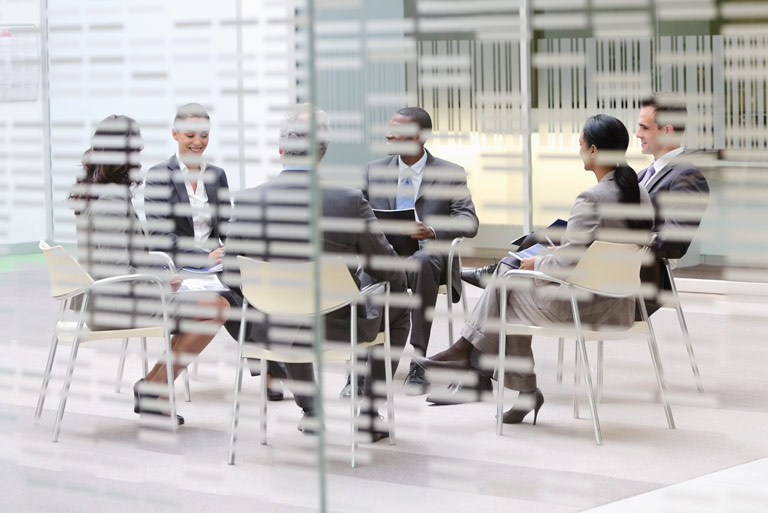The Barrier To America Going Paperless? The Hassle Of Giving Up Paper
Companies that want customers to go paperless must rethink their communications approach to make the overall digital experience simpler and better, not just cheaper, than paper.

By Rich Daly, Broadridge CEO and Forbes Contributor
Technology has disrupted countless things in our lives. Google has made things like phone books and paper maps almost worthless. And yet in one area of our increasingly high-tech world, it sometimes feels as if time is standing still — paper bills and statements keep coming through our mailboxes.

Despite the everyday use of email, only 12 to 15 percent of bills and statements are delivered electronically. Paper and postage cost businesses billions of dollars annually, so why are we still so tied to paper? Ask consumers, like we did, and you will find that they feel the electronic experience is not better than paper.
When you want to innovate, it’s not enough to make things simpler; you must make things better. When you buy a television on Amazon, it’s simpler because you don’t have to haul a huge box home from the store, and its better because user reviews are built in and frequently bought accessories are suggested. However, most electronic communications fail to make things simpler or better. Until they become more valuable and more engaging, they will not supplant paper.
The reason paper bills and statements remain popular is that the everyday, humdrum mailbox is actually a pretty neat thing. Six times weekly, mail from all of your providers arrives at your home. Like clockwork, it’s there, waiting for you to deal with it at your convenience. Now, consider what happens if you sign up for e-delivery. Typically, you get an e-mail notifying you that the mail is ready to be viewed. But because of security concerns, you are asked to log into a website to view the statement. Multiply that minor hassle by 20 bills and statements or more in any given month, and it gets cumbersome. Now you have 20 different websites and 20 sets of user names and passwords that must be changed every few months. You get the idea.
So, consumers are making rational decisions by keeping their bills and statements coming through the physical mailbox because consumers like how they deal with paper bills today and don’t prefer the electronic alternative. To change this, companies that want to increase their digital touch points with consumers and reduce paper and postage costs must adopt a consumer-centric approach to communications. Here are three ways to improve customer communications:
- Connect With Customers Where They Are
Don’t ask consumers to come to you; go where they are. I like to joke that if I communicated with my wife via Facebook, we would talk more than any happily married couple. Similarly, in business, if your customers visit your website once or twice a year, it makes more sense to connect with them on social networking sites, where they may check in dozens of times daily. That’s why, when Disney announces a new movie or a new theme park ride, it gets most of its attention by engaging customers on Facebook, the world’s third-most popular website, where the company has 51 million followers, not on its investor relations site, ranked 114,250th globally. Likewise, if bank customers use Google Drive, Amazon Cloud, iCloud or Evernote to store financial statements, that’s a better way to communicate than via email. A growing number of consumers use cloud-based services for scanning, downloading and storing financial documents and data. Why not deliver statements directly to personal cloud drive accounts and in exchange get customers to turn off paper? - Paperless Has To Be Easier
We all have a tried and trusted method to manage statements and bills so that everything gets paid without utilities or phones getting disconnected. At my home, we make four piles of mail — bills to pay on the first and 15th day of the month, items of personal interest to my wife, mail for me and trash. For most consumers, that type of personal logic has not been successfully replicated by using a couple of dozen websites. Too often, going paperless means significant upfront effort only to have a computer decorated with Post-it notes, reminding us of our passwords. Electronic communications must do more than simply digitize checks. They must have simple onboarding, be easy to use and be interactive. They need to be encrypted across a person’s various devices and centrally collect bills in the ecosystem where the customer wants to pay their bills.
- Gain The Network Effect
Going digital on a platform that already has a network of other companies has an added advantage — firms learn from one another and gain invaluable data, such as which of their customers have gone paperless with other vendors. Broadridge’s Communication Cloud connects Broadridge’s current network of thousands of brands, reaching over 75% of North American households with over 5 billion annual communications, to a network of 10 digital channels consumers already use, including Amazon, Dropbox and Evernote. That creates a powerful network that can be leveraged to wean people off of paper.
If companies connect with customers where they are and make the electronic experience easier, the opportunity is huge in both cost savings and consumer brand loyalty. Once smart companies get customers to go paperless and instead interact electronically, they can market to them more effectively, deepening customer relationships and boosting profits. For example, when Amazon added personalized recommendations, revenues grew 29 percent. Similarly, banks could use electronic bank statements to do so much more than paper statements — they could use demographic data to market mortgage offers to people thinking about buying homes and target college savings plan campaigns to customers with young children.
Done right, the business gets the best of both worlds — a great consumer experience and an overall migration towards digital. No individual company can replace the entire ecosystem that consumers use on paper, but they can succeed by joining whatever ecosystem consumers choose to organize their lives more successfully. In the end, transformative companies give customers what they want, whether that’s Amazon offering free delivery or Facebook boosting social interactions with friends and family. If your customers have not yet given up paper it’s because you have not yet given them what they want. Figure it out before your competitor does.
Related Content










